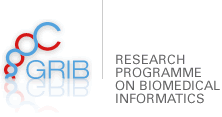
Thursday, 6th October, 2011, 11:00-12:00
New approaches for G protein-coupled receptor modulation
G protein-coupled receptors (GPCRs) are one of the most prevailing protein families in the human genome. GPCRs are receptors for sensory
signals of external origin such as odors, pheromones, or tastes; and for endogenous signals such as neurotransmitters, (neuro)peptides, hormones, and others. These proteins are key in cell physiology, and their malfunction is commonly translated into pathological outcomes. Thus, GPCRs constitute one of the most attractive drug targets.
In the ligand-free basal state, GPCRs exist in equilibrium of conformations, each stabilized by a network of intramolecular interactions. Ligand binding at the native (or orthosteric) site modulates receptor function by stabilizing new interaction networks and establishing new conformational equilibria. Activating ligands, or agonists, stabilize conformational changes in cytoplasmic domains that increase receptor signaling. Conversely, inverse agonists decrease the basal, agonist-independent level of signaling by stabilizing different conformational changes. In addition, ligand binding to an allosteric site (that is topographically distinct from the orthosteric site) might modulate the signalling of the orthosteric ligand. Positive allosteric modulators enhance the response of orthosteric agonists, while negative allosteric modulators decrease the effect.
We will show, combining the latest information about GPCR structure with chemical synthesis, site-directed mutagenesis, biophysical experiments and computational modeling, how the binding of the ligand to the allosteric or orthosteric site influences this equilibrium of conformations.
Speaker: Dr. Leonardo Pardo. Laboratori de Medicina Computacional, Unitat de Bioestadística, Facultat de Medicina, UAB
Room Seminar Room “Xipre” 173.06 (PRBB – 1st Floor)


